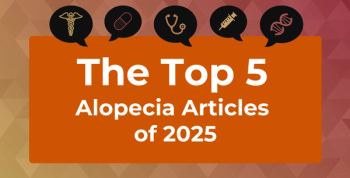
Health Care Utilization Study Compares Costs of Empagliflozin, DPP-4 Inhibitors, and GLP-1 Agonists for T2D
The results suggest that dipeptidyl peptidase-4 (DDP-4) inhibitors, which are widely prescribed in Germany, are not a cost-effective option despite lower drug pricing compared with empagliflozin.
Cardiovascular diseases (CVDs) account for a significant portion of health care costs in
A
SGLT-2 agents have been shown beneficial to body weight, blood pressure, blood uric acid levels, and inflammation in addition to being antihyperglycemic. They also reduce the risk of major cardiovascular events, coronary heart disease, and heart failure. GLP-1-RA drugs have also shown positive cardiovascular outcomes and are recommended for patients with T2D who do not respond to initial treatment and those who already have clinically relevant CVD. DPP-4 agents are recommended for patients who do not experience treatment response initially and do not have notable effects on heart failure risk.
The retrospective real-world study included 24,465 patients who initiated treatment with empagliflozin, DPP-4, or GLP-1-RA based on nationwide claims data in Germany from 2015 to 2018. Eligible patients were continuously insured and had a minimum of 2 outpatient diagnoses or 1 inpatient diagnosis of T2D. The costs of therapy among propensity score-matched cohorts from initiation through the end of data availability, therapy discontinuation, or death were compared in the assessment.
Of the overall cohort, 3285 patients received empagliflozin, 19,443 received a DPP-4, and 1747 received a GLP-1-RA. Most patients in the DPP-4 cohort received sitagliptin (94.6%), although saxagliptin and vildagliptin were also prescribed in 5.4% and less than 0.1% of patients, respectively. Dulaglutide and liraglutide were the most common GLP-1-RAs, accounting for 60.3% and 35% of those patients, respectively, and 4.7% received exenatide.
A total of 31.2% of patients started on empagliflozin were previously exposed to insulin therapy, as were 15.7% of the DPP-4 cohort and 54.3% of the GLP-1-RA cohort. In all 3 groups, the most commonly used antidiabetic drug at baseline was metformin. Patients treated with empagliflozin were more likely to also receive cardiovascular medication.
After matching cohorts on each type of regimen based on propensity scores and adjusting for follow-up length differences, patients starting DPP-4 saw greater mean costs than those on empagliflozin (€7009 [$7093.84] vs. €4274 [$4325.74]). The GLP-1-RA cohort also had higher costs than empagliflozin (€6851 [$6933.93] vs. €4895 [$4954.25]).
Inpatient care led to the biggest difference between the empagliflozin and DPP-4 cohort costs, followed by pharmacy sales of prescribed medications. For patients given GLP-1-RA, cost differences were mostly due to medication costs and more intense dosing of GLP-1-RA. These results were seen across patients receiving monotherapy, insulin-naïve patients, patients prescribed the agents of interest in addition to insulin, and those on dual therapy with metformin.
While there were fewer hospitalizations in patients on empagliflozin compared with the other therapy groups, the costs per hospitalization were higher and inpatient expenditure overall was similar between the empagliflozin cohort and GLP-1-RA group. Within the top 10 reasons for hospitalization, 8 were CVD-related, which emphasized the need to mitigate cardiovascular risk in patients with T2D.
The data show varied health care expenses between T2D patients receiving empagliflozin, DPP-41i, and GLP-1-RA — especially between patients on empagliflozin versus those on DPP-4, largely due to lower CVD-related hospitalization rates in the empagliflozin group.
“The results of this study indicate that treatment with DDP-4i, which is widely prescribed in Germany, is not a cost-effective option despite the lower drug price compared to [empagliflozin] EMPA. Healthcare providers should therefore reconsider their current treatment patterns,” the authors concluded.
Further research is warranted to confirm the study results and to glean more insight into the efficacy of SLGT-2 inhibition for heart failure in real-world settings.
Reference
Wilke T, Picker N, Müller S, et al. Healthcare resource utilization and associated costs in new users of empagliflozin versus DPP-4 inhibitors and GLP-1 agonists: a comparative analysis based on retrospective real-world data from German sickness funds. Clinicoecon Outcomes Res. Published online May 2, 2022. doi:10.2147/CEOR.S357540
Newsletter
Stay ahead of policy, cost, and value—subscribe to AJMC for expert insights at the intersection of clinical care and health economics.








































